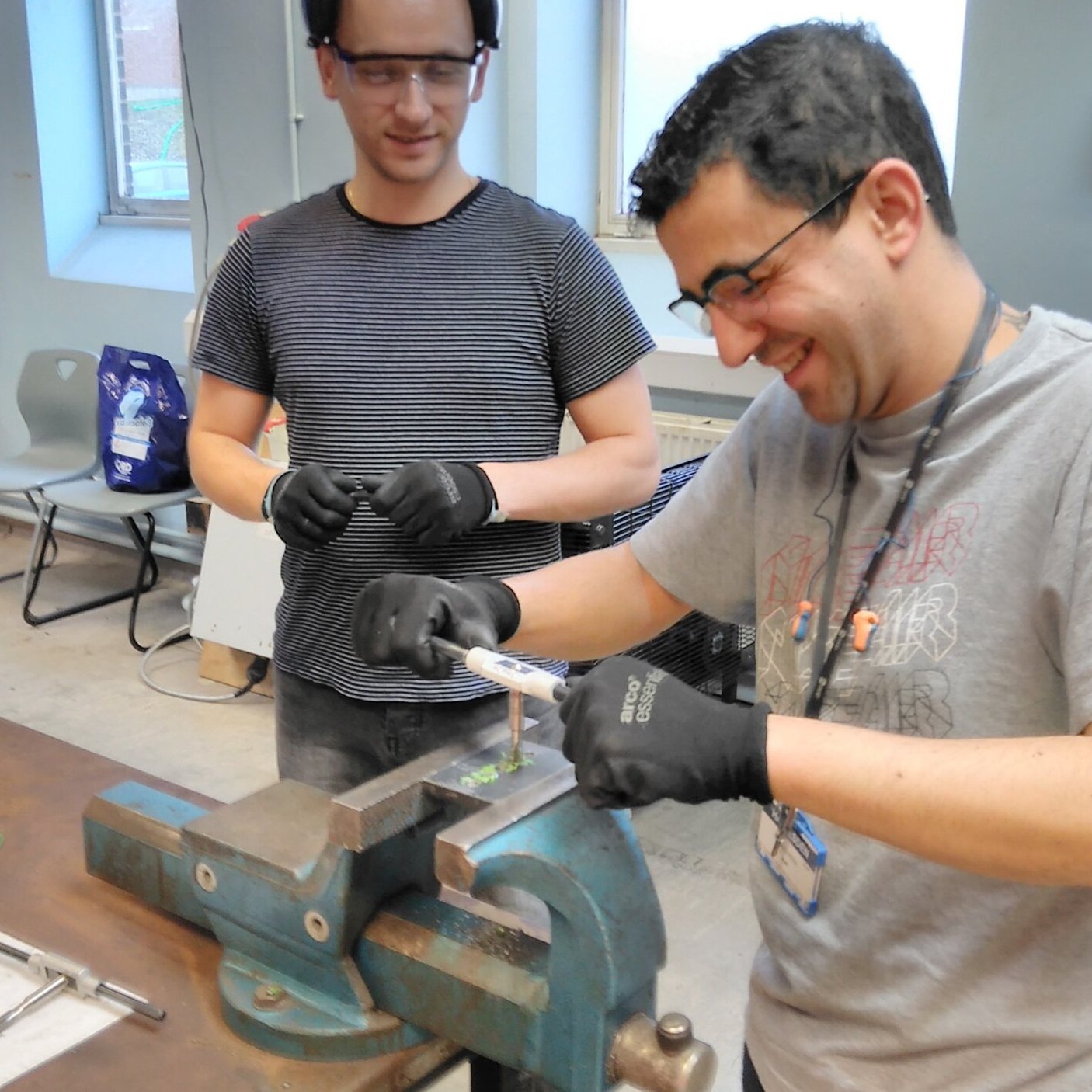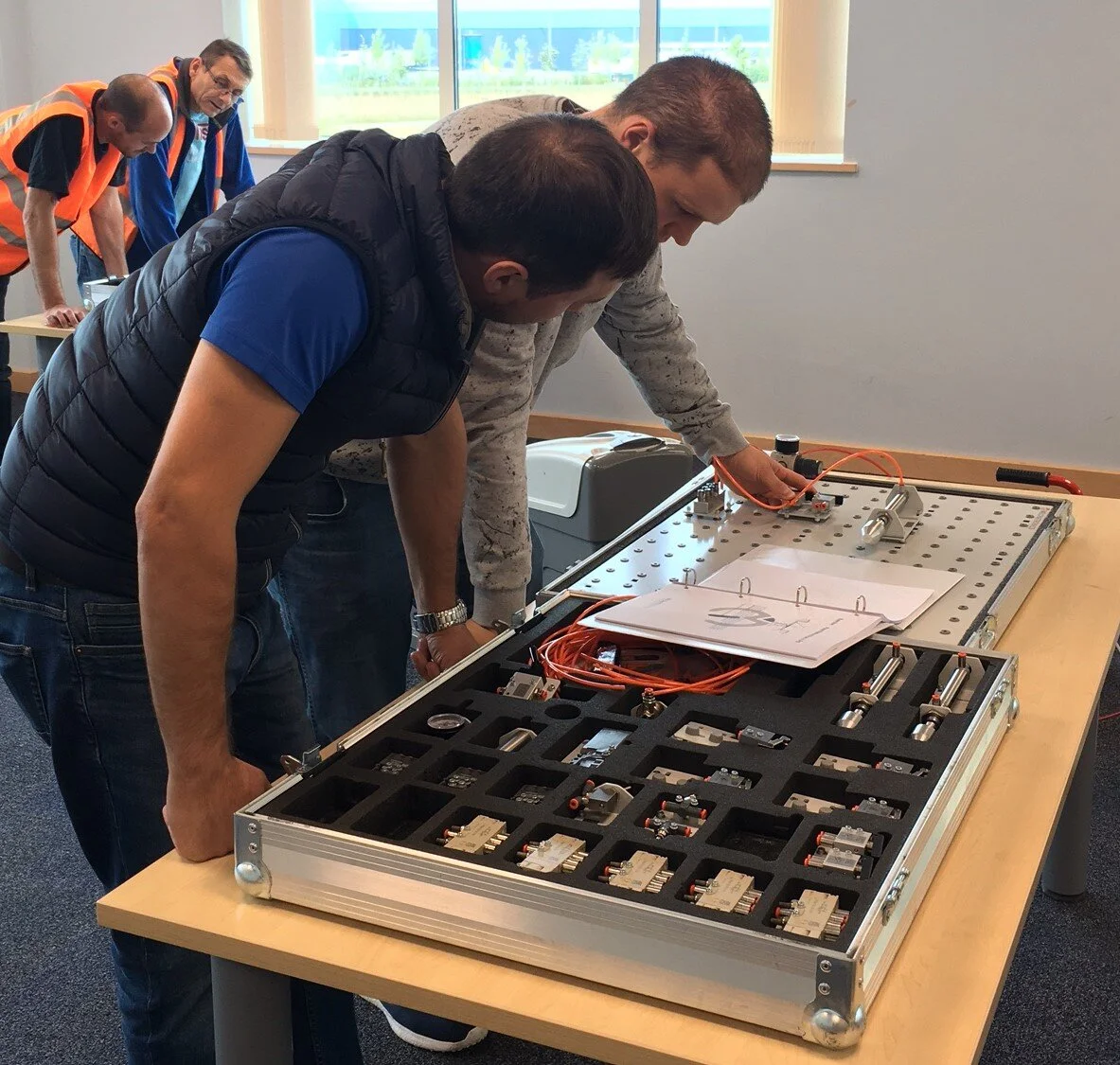10 Top Tips for successful training
MCP's technical training specialises in practical learning programmes for upskilling technicians and operators
UK Businesses now require a more flexible, multi-skilled workforce. In the past, a mechanical fitter would need an electrician to disconnect a motor from a pump. Now with basic electrical skills, the fitter can recommission the motor and get the plant up and running quicker. MCP focuses on high-frequency low-risk tasks to make the most impact on the bottom line.
These notes are offered in the interest of better training outcomes.
Trainers, Please Note!
Whether you are a team leader, a manager or a trainer, you have an interest in ensuring that training delivered to employees is effective. So often, employees return from the latest training course and it’s back to "business as usual". In many cases, the training is either irrelevant to the organisation's real needs or there is too little connection made between the training and the workplace or even workstation!
In these instances, it does not matter whether the training is superbly and professionally presented. The disparity between the training and the workplace just wastes resources (certainly not Lean!), resulting in mounting frustration and a growing cynicism about the benefits of training. You can turn around the wastage and worsening morale by following these Top Ten Tips on getting maximum impact from your training.
Make sure that the initial training needs analysis focuses first on what the learners will be required to do differently back in the workplace, and base the training content and exercises on this end objective. Many training programs concentrate solely on telling learners what they need to know, trying vainly to fill their heads with unimportant and irrelevant theories.
Integrate the training with workplace practice by getting managers and supervisors to brief learners before the program starts and to debrief each learner at the conclusion of the program. The debriefing session should include a discussion about how the learner plans to use the learning in their day-to-day work and what resources the learner requires to be able to do this.
Ensure that the start of each training session lets learners know the behavioural objectives of the programme. i.e. what the learners are expected to be able to do at the end of the training. Many session objectives that trainers write simply state what the session will cover or what the learner is expected to know. Knowing or being able to describe how someone should safely isolate an electrical supply is not the same as being able to safely isolate an electrical supply.
Make the training very practical. Remember, the objective is for learners to behave differently in the workplace. With possibly years spent working the old way, the new way will not come easily. Learners will need generous amounts of time to discuss and practice the new skills and will need lots of encouragement. Many actual training programs concentrate solely on cramming the maximum amount of information into the shortest possible class time, creating programs that are "nine miles long and one inch deep". The training environment is also a great place to embed the attitudes needed in the workplace. However, this requires time for the learners to raise and thrash out their concerns before the new skills are required. Give your learners the time to make the journey from the old way of thinking to the new.
With the pressure to have employees spend less time away from their workplace in training, it is just not possible to turn out fully equipped learners at the end of one hour or one day or one week, except for the most basic of skills. In some cases, work quality and efficiency will drop following training as learners stumble in their first applications of the newly learned skills. Ensure that you build back-in-the-workplace coaching into the training program and give employees the workplace support they need to practice the new skills. A cost-effective means of doing this is to resource and train internal employees as trainers/coaches/assessors. You can also encourage peer networking through, for example, setting up user groups and organising "tool box" talks.
Bring the training room into the workplace through developing and installing on-the-job aids. These include checklists, reminder cards, process and diagnostic flow charts, training rigs and software templates.
If you are serious about imparting new skills and not just planning a "talking shop", assess your participants during or at the end of the program. Make sure your assessments are realistic and genuinely test for the skills being taught. Nothing concentrates participants'’ minds more than them knowing that there are definite expectations around their level of performance following the training.
To avoid the back to "business as usual" syndrome, align the organisation's reward systems with the expected behaviours. Planning to give positive encouragement is much more effective than planning sanctions if they don’t use the new skills back in the workplace.
Conduct a post-course evaluation sometime after the training to determine the extent to which participants are using the skills. This is typically done three to six months after the training has finished. You can have a vocationally qualified assessor observe the participants or survey participants' managers on the application of each new skill. Let everyone know that you will be performing this evaluation from the start. This helps to engage team leaders and managers and avoids surprises later on.
Lastly, celebrate the success of the programme by getting senior managers to present certificates and awards for the initial training and later on for a demonstration of skills back in the workplace. For people who actually use the new skills back on the job, give them a gift voucher, a crate of beer, a bonus, or an employee of the month award. Or you could reward them with interesting and challenging projects or make sure they are next in line for a promotion.
Organisations waste a lot of scarce resources in conducting ineffective training programs. Employee morale also suffers when employees see managers not really serious about instilling new behaviours. By following the ten pointers above, you will have actively engaged managers in the training process and provided those all-important links between the training and the participant's workplace. You can then sit back and enjoy the results; happy and effective employees.







